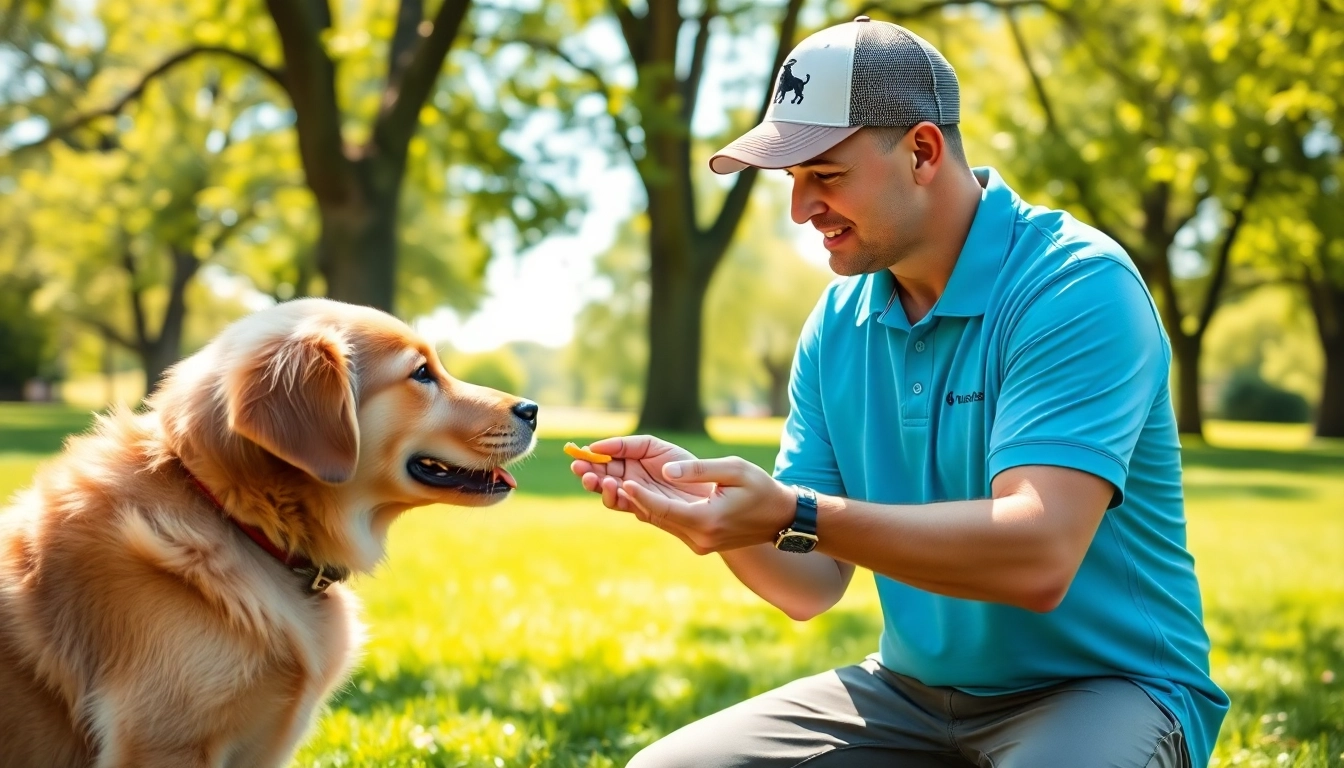Understanding the Basics of Dog Training in Irvine
Dog training is an essential aspect of pet ownership, especially in a community like Irvine, where responsible pet ownership is highly valued. A well-trained dog is not only a joy to have but also contributes to a safe and harmonious neighborhood. In this guide, we will explore the fundamentals of dog training, helping you to understand the significance of various training methods, the socialization process, and the unique learning styles of your furry friend. Whether you’re considering dog training Irvine services or planning to train your dog at home, this article covers all the essential bases.
The Importance of Socialization for Puppies
Socialization is critical for puppies, as it lays the foundation for their behavior as adult dogs. During the first few months of life, puppies’ experiences shape their future interactions and responses to various stimuli. Socializing your puppy involves exposing them to different people, environments, and other animals in a manageable and positive way.
In Irvine, there are numerous puppy socialization classes and groups aimed at helping young dogs adapt to their surroundings. Positive experiences during this crucial developmental stage can prevent fear and aggression in later life. For example, introducing your puppy to various sights, sounds, and smells helps condition them to be calm in everyday situations, reducing anxiety and promoting confidence.
Types of Training Methods: Positive vs. Traditional
Dog training methods can generally be categorized into two main types: positive reinforcement and traditional (or negative reinforcement) techniques. Positive reinforcement focuses on rewarding desired behaviors, such as sitting on command, with treats, praise, or playtime. This method fosters a positive relationship between dog and owner, promoting trust and eagerness to learn.
On the other hand, traditional methods often involve punishing unwanted behaviors. This can lead to fear or anxiety, impacting the dog’s overall well-being and trust in their handler. Modern dog trainers in Irvine tend to favor positive reinforcement due to its effectiveness and the bond it creates between owner and pet.
Identifying Your Dog’s Learning Style
Each dog has a unique learning style influenced by factors such as breed, age, and previous experiences. Some dogs may learn quickly through visual cues, while others may respond better to verbal instructions or tactile guidance. Understanding how your dog learns best can significantly enhance the training process.
A few methods to determine your dog’s learning style include:
- Visual Learners: These dogs respond well to hand signals and gestures.
- Auditory Learners: These dogs learn better through verbal commands and cues.
- Tactile Learners: These dogs may require hands-on guidance to understand what you want them to do.
Choosing the Right Dog Training School in Irvine
When it comes to dog training, selecting the right school is crucial to ensuring success for both you and your pet. With various options available in Irvine, it’s essential to know what to look for to ensure quality training and a positive experience.
Key Factors to Consider When Selecting a Trainer
Choosing a dog trainer requires careful consideration of several factors:
- Qualifications: Look for trainers with certifications from reputable organizations, such as the Association of Professional Dog Trainers (APDT) or the International Association of Animal Behavior Consultants (IAABC).
- Training Philosophy: Ensure that the trainer’s methods align with your beliefs about animal training, emphasizing the importance of positive reinforcement.
- Experience with Your Dog’s Breed: Some trainers may specialize in specific breeds or types of behavior. Ensure the trainer has experience working with your dog’s breed to address any breed-specific traits or challenges.
- Class Size: Smaller class sizes typically offer more personalized attention, which can help you and your dog receive more targeted guidance.
Reviews and Testimonials: How to Evaluate a Training Program
Taking the time to read reviews and testimonials from other dog owners can provide valuable insight into a training program’s effectiveness. Look for feedback on the trainer’s teaching style, the progress students have made, and the overall satisfaction of clients.
Online platforms like Yelp, Google Reviews, or community forums can be excellent resources for gathering this information. Don’t hesitate to reach out to former clients for their firsthand experience, as personal recommendations often hold significant weight in decision-making.
Comparing Group Classes vs. Private Sessions
One of the major decisions you’ll face when selecting a dog training program is whether to enroll your dog in group classes or private sessions. Each format has its pros and cons, and understanding them can help you make an informed choice.
Group Classes: These are typically more affordable than private sessions and can provide your dog with valuable opportunities to socialize with other pets. However, individual attention may be limited, which can be a concern if your dog has specific behavioral issues that require more focused training.
Private Sessions: These sessions allow for one-on-one instruction tailored to your dog’s needs. They tend to be more expensive but can yield faster results, especially for dogs with unique challenges. If you opt for individual sessions, ensure you still engage with other dogs periodically to maintain social skills.
Essential Skills to Teach Your Dog
Training your dog should encompass a well-rounded curriculum that includes basic obedience commands, addressing behavioral concerns, and teaching advanced skills. Establishing this foundation early on will lead to a more well-behaved and happy pet.
Basic Commands: Sit, Stay, and Come
Every dog should master a set of essential commands that promote safety and control. Teaching basic commands like “sit,” “stay,” and “come” fosters a solid foundation for more advanced training. Here’s a brief overview of how to teach these commands:
- Sit: Hold a treat above your dog’s nose, slowly moving it backward over their head. As they follow the treat, their bottom will naturally lower to the ground. Once they sit, reward them with the treat and praise.
- Stay: Start with your dog in a sitting position. Show them a flat hand while verbally saying “stay.” Take a step back, and if they do not move, reward them. Gradually extend the distance and duration of the stay, making it more challenging over time.
- Come: Use a cheerful tone to encourage your dog to approach you. When your dog moves towards you, reward them with treats and praise. This command is essential for your dog’s safety, particularly in public spaces.
Addressing Aggressive Behavior Through Training
Aggressive behavior can arise from various factors, including fear, territorial instincts, or past trauma. It’s crucial to address these behaviors early to prevent them from escalating. Working with a professional trainer experienced in behavior modification can be highly effective.
Common techniques for managing aggressive behavior include:
- Desensitization: Gradually exposing your dog to the trigger that causes aggression at a distance they can tolerate while rewarding calm behavior.
- Counter-conditioning: Changing your dog’s emotional response to the aggressive trigger by pairing it with something positive (like treats or toys).
Advanced Skills: Tricks and Off-Leash Training
Once your dog masters basic commands and is well-socialized, consider teaching them advanced skills such as tricks and off-leash training. These activities not only engage your dogs mentally but also strengthen your bond with them.
Some advanced commands to consider include:
- Spin: Encourage your dog to spin in circles by using a treat to lure them while saying “spin.” Reward them once they complete the action.
- Fetch: Start with basic retrieve concepts, encouraging your dog to bring back a toy. Praise and reward them for successful retrievals.
- Off-Leash Commands: Once your dog has proven their responsiveness to commands, practicing off-leash training requires a safe environment. Use a long leash while practicing recall to ensure their safety.
The Role of Breed-Specific Needs in Training
Understanding your dog’s breed and specific behavioral traits can play a vital role in their training. Certain breeds are predisposed to specific behaviors, needs, and temperaments that can impact training techniques.
Understanding Common Breeds and Their Behavior
Different dog breeds have unique temperamental traits that can affect how they respond to training. For example:
- Herding Breeds: Breeds like Border Collies or Australian Shepherds are often intelligent and energetic, requiring both physical and mental stimulation.
- Terriers: Generally feisty and independent, terriers may require more patience and consistent training to curb stubborn behaviors.
- Guard Breeds: Dogs like Rottweilers and German Shepherds often require more socialization early on to ensure they are safe and well-adjusted around strangers and other animals.
Tailoring Training Techniques to Specific Breed Traits
Implementing breed-specific strategies in your training can yield better results. For instance, utilizing a high-energy training method for herding dogs can cater to their needs, while using positive reinforcement to motivate less active breeds is more effective.
Additionally, recognizing the unique challenges certain breeds face can help avoid frustration. For example, training a stubborn breed may require more creativity and variety in training techniques, including integrating games that appeal to their instincts.
Resources for Training Different Dog Types in Irvine
In Irvine, you have access to various resources tailored to specific dog breeds, including specialized training schools, grooming services, and enrichment programs. Many training facilities even focus on breed-specific behavioral management.
By leveraging local resources, attending breed club meetings, or participating in dog shows, you can gain insights and support from communities that understand your dog’s specific needs.
Measuring Success in Dog Training
Measuring the success of your dog training efforts is key to ensuring your dog’s development progress. Establishing clear benchmarks and goals allows dog owners to track their pet’s performance and adapt their approach as necessary.
Setting Realistic Goals for Your Dog
Setting practical, achievable goals provides a roadmap for your training sessions. Break down larger goals into smaller, easily attainable milestones. For example, if your goal is for your dog to perform off-leash commands, consider targeting milestones like mastering “come” on a leash before progressing further.
Tracking Progress and Adjusting Training Approaches
Regular assessments of your dog’s performance will help you determine whether your training methods are effective or require adjustments. Keeping a log or journal documenting the training sessions, techniques used, and any visible improvements can be beneficial.
If a specific strategy doesn’t seem to work after a reasonable time, don’t hesitate to consult with a professional trainer who can provide alternative methods.
Celebrating Achievements with Your Pet
Recognizing and celebrating progress is essential for maintaining motivation for both you and your dog. Celebrating achievements can be as simple as providing praise, treats, or extra playtime. Acknowledging milestones fosters a positive atmosphere and strengthens your bond.
Consider hosting a small celebration with family or friends when your dog successfully completes training. This not only encourages your dog but also builds your support network of fellow pet enthusiasts.



